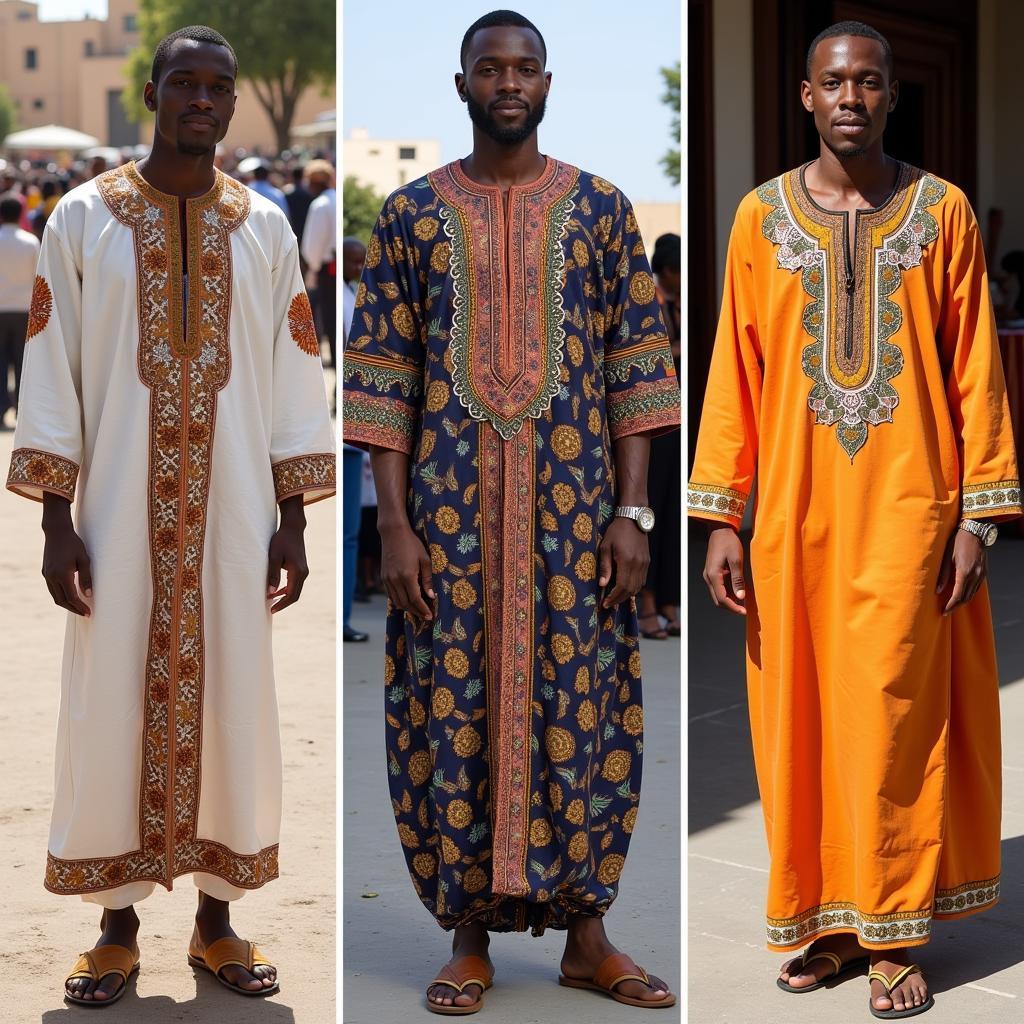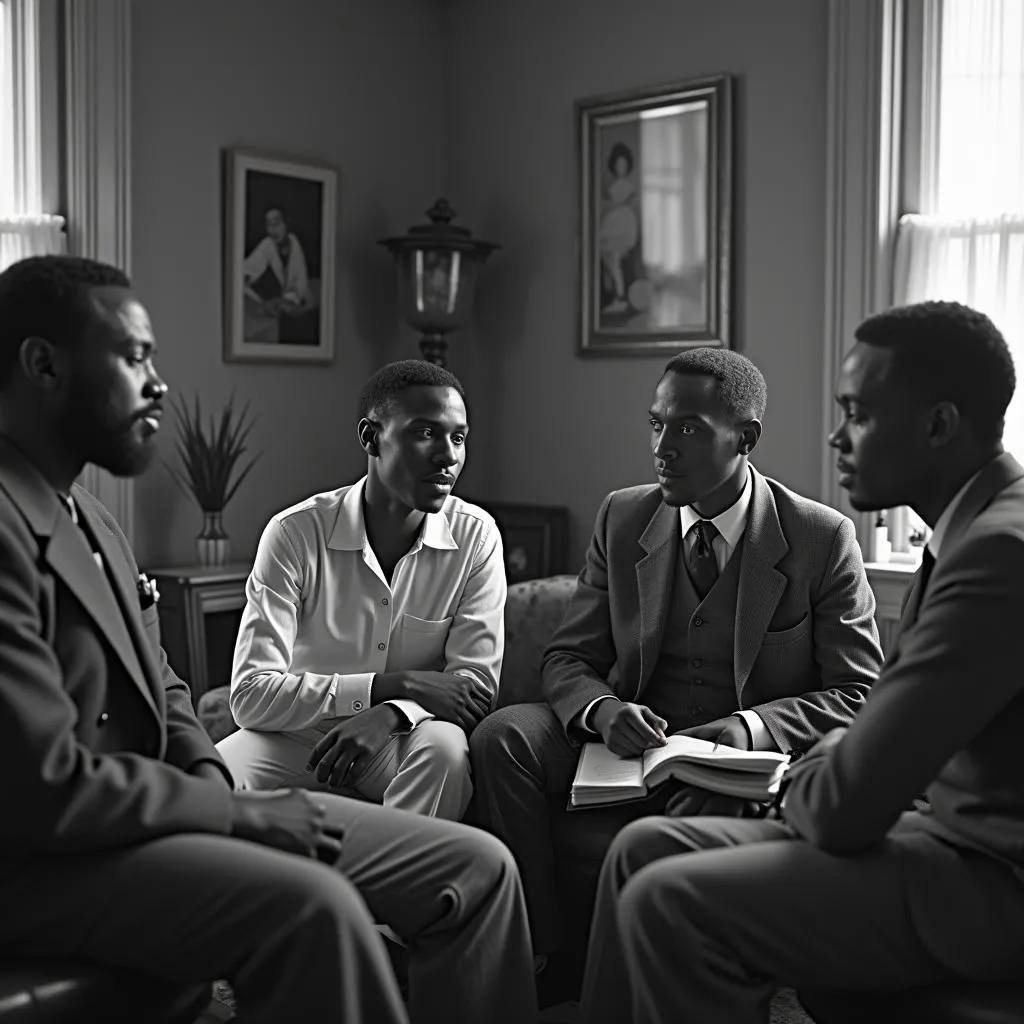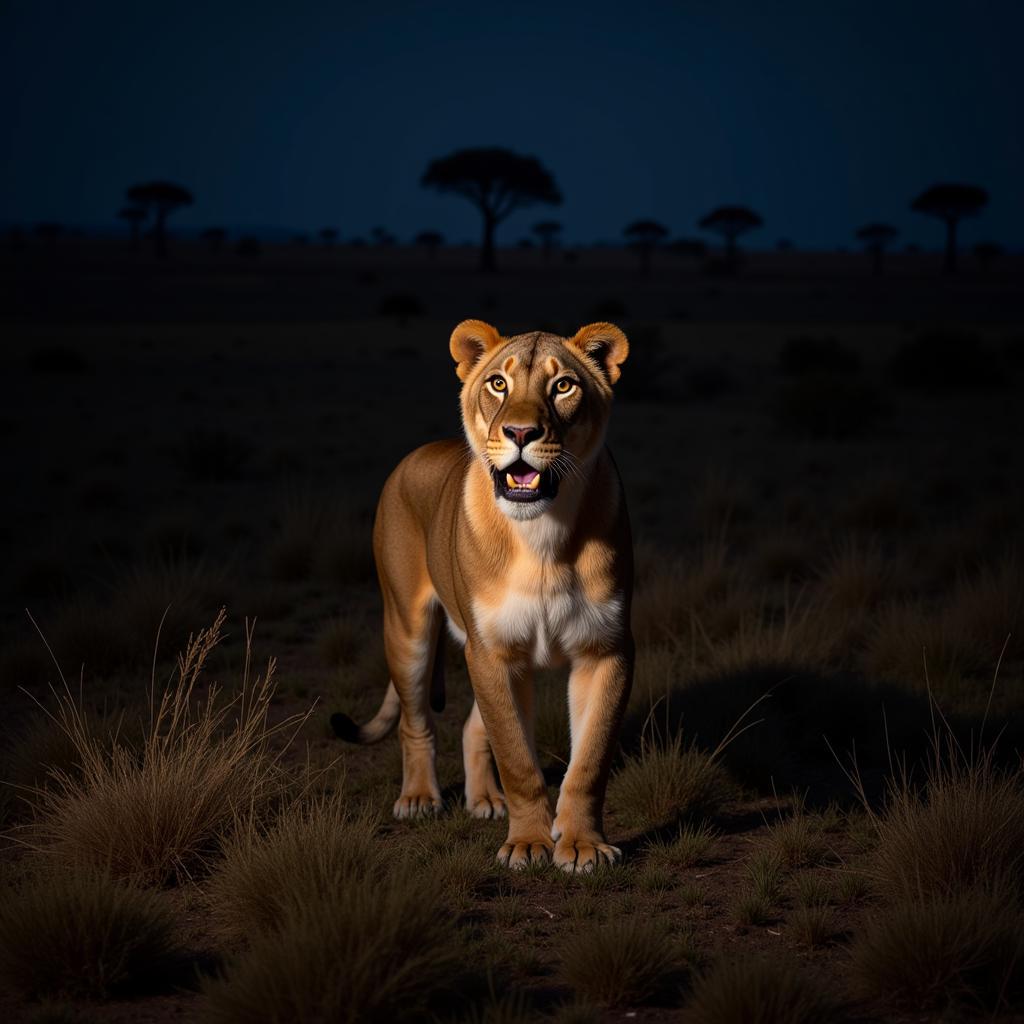The Disturbing Truth Behind the “African Child Vulture Photo”
The image of a starving African child, with a vulture lurking in the background, is one of the most iconic and controversial photographs ever taken. While the photographer, Kevin Carter, won a Pulitzer Prize for the image, it sparked a global debate about ethics in photojournalism and the portrayal of suffering in Africa. The “African Child Vulture Photo”, as it became known, encapsulates the complex relationship between the Western world, media representation, and the realities of life in Africa.
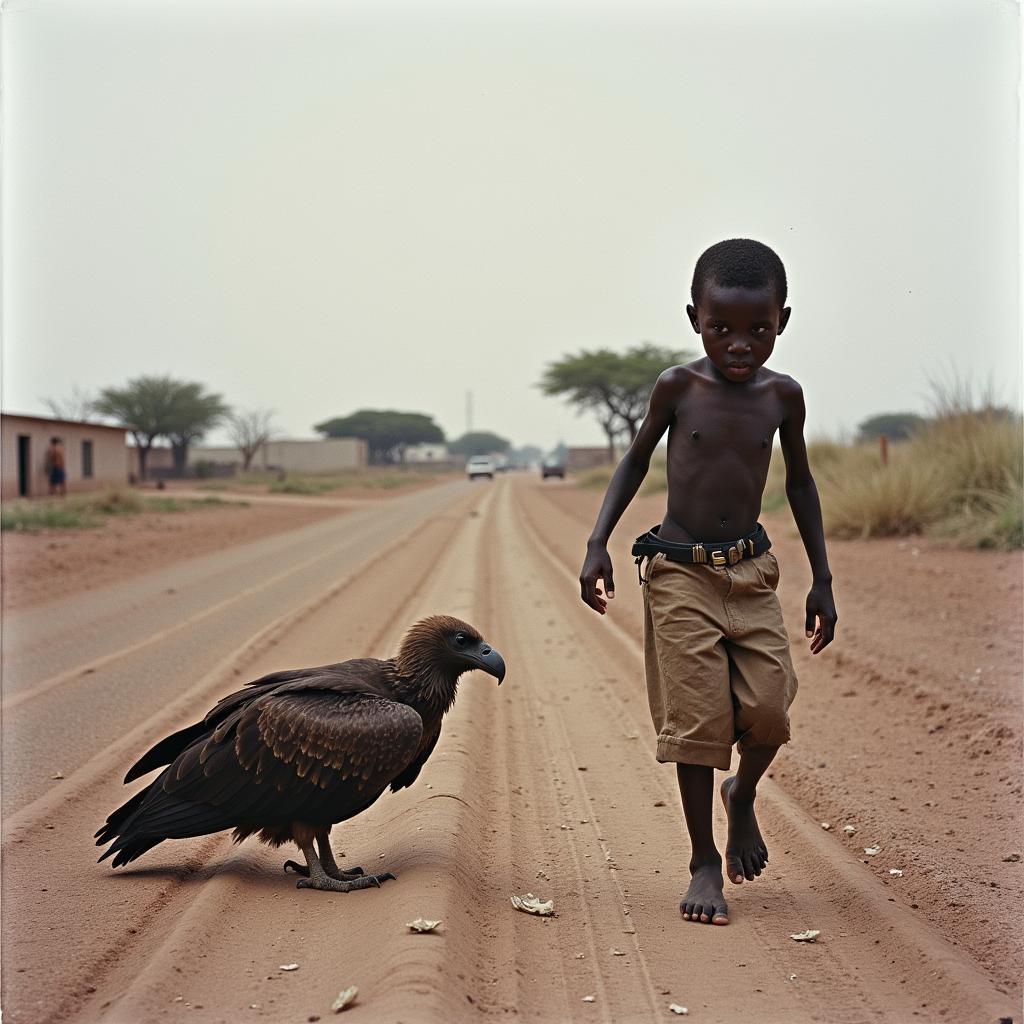 A starving child with a vulture in the background
A starving child with a vulture in the background
Beyond the Lens: The Story of the Photograph
Taken in 1993 during the famine in South Sudan, the photograph quickly gained notoriety. It became a symbol of the devastation caused by famine and the perceived inaction of the international community. Newspapers around the world, including The New York Times, published the image, sparking outrage and prompting donations to aid organizations.
However, the photo also drew criticism. Many questioned Carter’s decision to take the picture instead of helping the child. The public, largely unaware of the context surrounding the photograph, saw it as a stark representation of journalistic apathy in the face of human suffering. This criticism intensified after Carter took his own life a year later, with some attributing his suicide to the guilt and trauma associated with the image.
Unraveling the Context: A More Nuanced Perspective
While the “African child vulture photo” undoubtedly evokes powerful emotions, it’s crucial to understand the context surrounding the image. Carter was part of a group of photojournalists documenting the famine, and they were working in extremely challenging and dangerous conditions. The feeding center, represented by a blurry shape in the background, was nearby, indicating the child was not entirely abandoned.
Furthermore, accounts from other journalists present at the scene suggest that the child’s mother was nearby, briefly leaving her child to collect food aid. The vulture, a common sight in the area, was likely more interested in scraps of food than the child itself.
The Legacy of an Image: A Catalyst for Change?
Despite the controversy, the “African child vulture photo” undeniably played a significant role in raising awareness about the famine in Sudan. It brought the realities of poverty, hunger, and conflict to the forefront of global consciousness, prompting governments and individuals to take action. The image also sparked crucial conversations about the ethics of photojournalism, the power of imagery, and the responsibility of witnessing suffering.
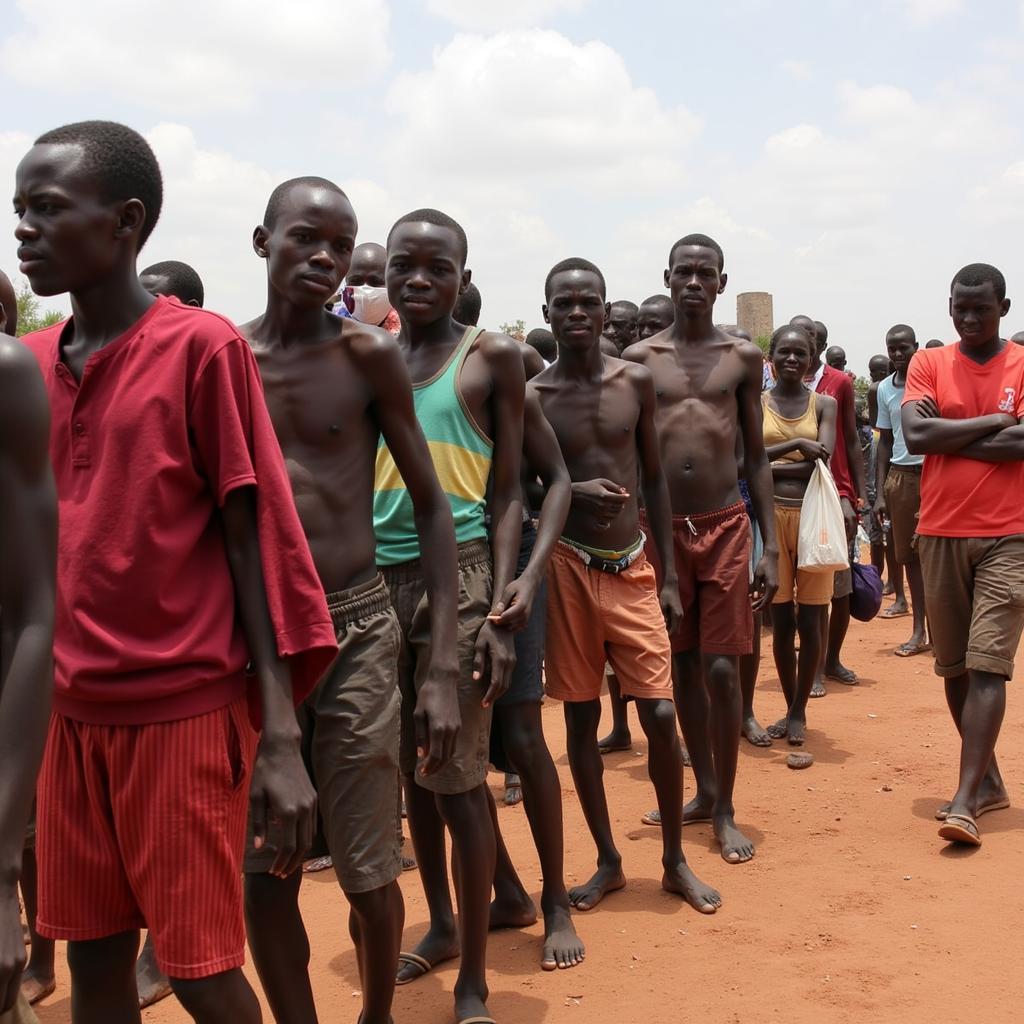 Aid workers distributing food during the Sudanese famine
Aid workers distributing food during the Sudanese famine
Navigating the Ethical Minefield: Photojournalism and Human Suffering
The “African child vulture photo” continues to be a potent reminder of the complex ethical dilemmas faced by photojournalists. It highlights the tension between documenting suffering and potentially exploiting it, between respecting the dignity of subjects and capturing the rawness of reality. The debate surrounding the image encourages us to critically examine how we consume and interpret images of suffering, urging us to look beyond the surface and engage with the human stories behind them.
The “African Child Vulture Photo”: A Legacy of Questions
While the “African child vulture photo” might not have a single, definitive answer, it continues to challenge us to grapple with essential questions: What is the role of photojournalism in a world saturated with images? How do we balance the need to raise awareness about suffering with the responsibility to portray it ethically? And most importantly, how can we move beyond simply witnessing suffering to taking meaningful action?
FAQs about the “African Child Vulture Photo”
1. Where was the “African child vulture photo” taken?
The photograph was taken in Ayod, South Sudan, during the famine of 1993.
2. Did the photographer help the child in the photo?
There are conflicting accounts about what happened after the photograph was taken. Some reports suggest Carter chased the vulture away, while others indicate he left shortly after taking the photo.
3. What happened to the child in the photograph?
The child’s fate remains unknown.
4. Why is the “African child vulture photo” considered controversial?
The photograph sparked debate about the ethics of photojournalism, with many criticizing Carter for taking the photo instead of helping the child.
5. What is the legacy of the “African child vulture photo”?
The photograph continues to raise questions about the portrayal of suffering, the role of photojournalism, and the responsibility of witnessing human tragedy.
For any inquiries or assistance, don’t hesitate to contact us:
Phone: +255768904061
Email: kaka.mag@gmail.com
Address: Mbarali DC Mawindi, Kangaga, Tanzania.
Our dedicated customer support team is available 24/7 to assist you.
